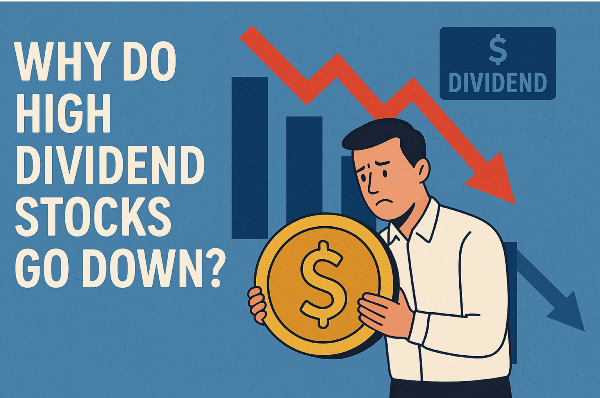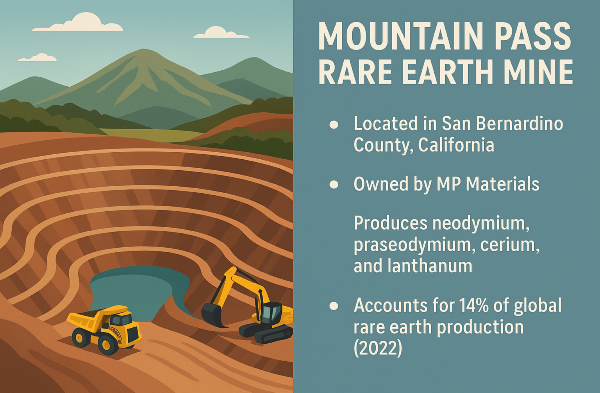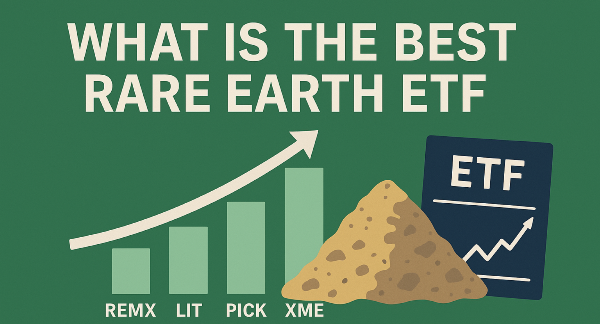Key Takeaways
High dividend stocks may go down due to concerns about the company’s ability to sustain payouts, especially if earnings decline or debt levels rise. Additionally, in rising interest rate environments, investors often shift to safer income alternatives, making high-yield stocks less attractive.
Introduction
Ah, high dividend stocks—the golden geese of the investing world. They sit there, laying eggs in the form of sweet, sweet passive income, and investors flock to them like seagulls fighting over a dropped French fry. Sounds great, right? But here’s the kicker: sometimes those once-glorious stocks take a nosedive, leaving investors wondering what happened. Turns out, there are quite a few ways dividend stocks can go south, from economic meltdowns to bad management decisions. Let’s dive into why these so-called “safe bets” sometimes crash and burn.
Factors That Cause High Dividend Stocks to Drop
1. Market Conditions and Economic Cycles
You know what doesn’t mix well with stable dividends? Economic chaos. When recessions hit, companies tighten their belts and dividends are often the first expense on the chopping block. Specific sectors—like energy and financials—are extra vulnerable, and if interest rates climb, suddenly dividend stocks aren’t looking so hot compared to safer, fixed-income options. Bottom line: markets move in cycles, and if your dividend stock is riding the wrong wave, it could get wiped out.
2. Dividend Sustainability Concerns
Not all dividends are built to last. Some companies promise juicy payouts that they can’t actually afford, and when reality catches up, they slash dividends like an angry chef hacking through vegetables. When this happens, investors freak out, bail on the stock, and the price plummets. Exhibit A: General Electric and AT&T, both of which tried playing the “we can totally afford this” game before slashing dividends and watching their stock tumble. Lesson learned? If a dividend yield looks too good to be true, it probably is.
3. Stock Dilution and Management Decisions
Sometimes management gets a little… creative. Companies desperate to maintain dividends may start issuing more shares, diluting existing investors’ stakes and tanking the stock’s value. Or maybe they make bad acquisitions, overextend themselves, and realize—whoops!—they can’t sustain payouts. Leadership shake-ups can add another layer of uncertainty, because new execs love changing the game plan, and that often includes dividend cuts. Moral of the story? Keep an eye on management decisions before you hitch your wagon to a dividend stock.
4. Industry Disruption and Competitor Pressure
Remember when Blockbuster was a thing? Exactly. Industries evolve, competitors rise, and companies that fail to adapt end up on the chopping block. Dividend-paying companies aren’t immune—whether it’s tech disrupting retail, renewables shaking up energy, or startups stealing market share, industry changes can wreck revenue streams and force dividend cuts. So before you invest, ask yourself: is this company built for the future, or is it clinging to past glory?
5. Rising Interest Rates and Alternative Investments
When interest rates rise, dividend stocks lose their sparkle. Why take on market risk when you can get decent returns from bonds or treasury securities instead? Investors aren’t sentimental—they’ll jump ship to whatever offers the best yield. Historical trends prove it—every time the Fed hikes rates aggressively, dividend-heavy sectors like utilities and REITs take a hit. The trick is keeping an eye on macroeconomic trends so you’re not caught holding the bag when the market pivots.
How to Mitigate Risks as an Investor
Alright, now that we’ve sufficiently terrified you, let’s talk about how to avoid getting wrecked by dividend disasters. First off, diversification is key—spread your money across different industries so one bad sector doesn’t torpedo your whole portfolio. Second, do your homework. Check financial statements, payout ratios, and long-term earnings trends before committing. Lastly, watch for red flags like excessive debt, over-promised dividends, or unstable leadership. If something smells fishy, trust your gut and look elsewhere.
Conclusion
Dividend investing can be a goldmine—until it isn’t. Economic downturns, bad management, rising rates, and market shifts can all turn a once-reliable stock into an absolute money pit. The good news? You don’t have to be a victim. Do your research, diversify, and don’t blindly chase high yields without checking sustainability. Be smart, and dividend investing can still be your ticket to financial freedom—just don’t assume it’s a guaranteed win.
🚀 Master Dividend Investing – Your Ultimate Guide 💰
Looking to supercharge your portfolio with dividend stocks? 📈 Check out these essential reads:
🏆 Top Dividend Stocks & Strategies
💰 Passive Income & Dividend Power Moves
🔍 How to Pick Winning Dividend Stocks
📊 Dividend Ratios & Metrics
⚡ Dividend Timing & Tax Strategies
🔗 Bookmark this guide & start your dividend wealth journey today! 🚀💸




























Key Takeaways
High dividend stocks may go down due to concerns about the company’s ability to sustain payouts, especially if earnings decline or debt levels rise. Additionally, in rising interest rate environments, investors often shift to safer income alternatives, making high-yield stocks less attractive.
Introduction
Ah, high dividend stocks—the golden geese of the investing world. They sit there, laying eggs in the form of sweet, sweet passive income, and investors flock to them like seagulls fighting over a dropped French fry. Sounds great, right? But here’s the kicker: sometimes those once-glorious stocks take a nosedive, leaving investors wondering what happened. Turns out, there are quite a few ways dividend stocks can go south, from economic meltdowns to bad management decisions. Let’s dive into why these so-called “safe bets” sometimes crash and burn.
Factors That Cause High Dividend Stocks to Drop
1. Market Conditions and Economic Cycles
You know what doesn’t mix well with stable dividends? Economic chaos. When recessions hit, companies tighten their belts and dividends are often the first expense on the chopping block. Specific sectors—like energy and financials—are extra vulnerable, and if interest rates climb, suddenly dividend stocks aren’t looking so hot compared to safer, fixed-income options. Bottom line: markets move in cycles, and if your dividend stock is riding the wrong wave, it could get wiped out.
2. Dividend Sustainability Concerns
Not all dividends are built to last. Some companies promise juicy payouts that they can’t actually afford, and when reality catches up, they slash dividends like an angry chef hacking through vegetables. When this happens, investors freak out, bail on the stock, and the price plummets. Exhibit A: General Electric and AT&T, both of which tried playing the “we can totally afford this” game before slashing dividends and watching their stock tumble. Lesson learned? If a dividend yield looks too good to be true, it probably is.
3. Stock Dilution and Management Decisions
Sometimes management gets a little… creative. Companies desperate to maintain dividends may start issuing more shares, diluting existing investors’ stakes and tanking the stock’s value. Or maybe they make bad acquisitions, overextend themselves, and realize—whoops!—they can’t sustain payouts. Leadership shake-ups can add another layer of uncertainty, because new execs love changing the game plan, and that often includes dividend cuts. Moral of the story? Keep an eye on management decisions before you hitch your wagon to a dividend stock.
4. Industry Disruption and Competitor Pressure
Remember when Blockbuster was a thing? Exactly. Industries evolve, competitors rise, and companies that fail to adapt end up on the chopping block. Dividend-paying companies aren’t immune—whether it’s tech disrupting retail, renewables shaking up energy, or startups stealing market share, industry changes can wreck revenue streams and force dividend cuts. So before you invest, ask yourself: is this company built for the future, or is it clinging to past glory?
5. Rising Interest Rates and Alternative Investments
When interest rates rise, dividend stocks lose their sparkle. Why take on market risk when you can get decent returns from bonds or treasury securities instead? Investors aren’t sentimental—they’ll jump ship to whatever offers the best yield. Historical trends prove it—every time the Fed hikes rates aggressively, dividend-heavy sectors like utilities and REITs take a hit. The trick is keeping an eye on macroeconomic trends so you’re not caught holding the bag when the market pivots.
How to Mitigate Risks as an Investor
Alright, now that we’ve sufficiently terrified you, let’s talk about how to avoid getting wrecked by dividend disasters. First off, diversification is key—spread your money across different industries so one bad sector doesn’t torpedo your whole portfolio. Second, do your homework. Check financial statements, payout ratios, and long-term earnings trends before committing. Lastly, watch for red flags like excessive debt, over-promised dividends, or unstable leadership. If something smells fishy, trust your gut and look elsewhere.
Conclusion
Dividend investing can be a goldmine—until it isn’t. Economic downturns, bad management, rising rates, and market shifts can all turn a once-reliable stock into an absolute money pit. The good news? You don’t have to be a victim. Do your research, diversify, and don’t blindly chase high yields without checking sustainability. Be smart, and dividend investing can still be your ticket to financial freedom—just don’t assume it’s a guaranteed win.
🚀 Master Dividend Investing – Your Ultimate Guide 💰
Looking to supercharge your portfolio with dividend stocks? 📈 Check out these essential reads:
🏆 Top Dividend Stocks & Strategies
💰 Passive Income & Dividend Power Moves
🔍 How to Pick Winning Dividend Stocks
📊 Dividend Ratios & Metrics
⚡ Dividend Timing & Tax Strategies
🔗 Bookmark this guide & start your dividend wealth journey today! 🚀💸